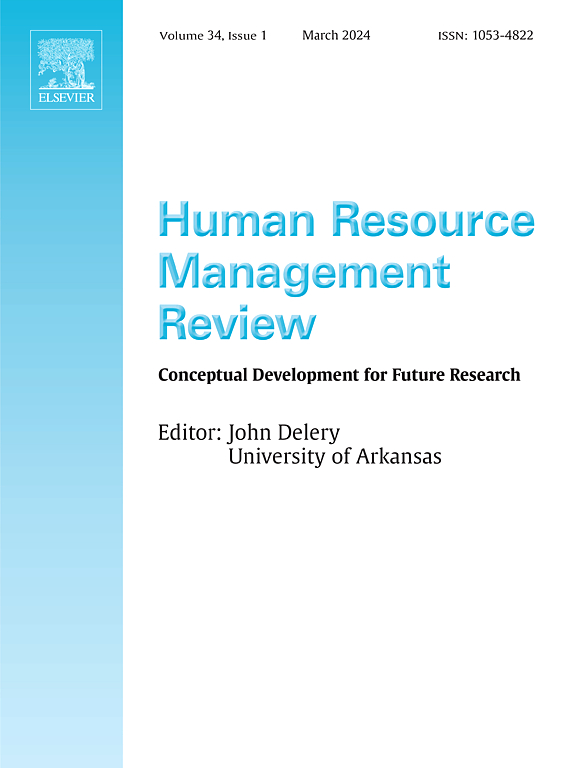Pink slips and possibilities: Toward a recognition-primed decision model of involuntary turnover
IF 13
1区 管理学
Q1 MANAGEMENT
引用次数: 0
Abstract
Employee retention is a central concern for scholars and practitioners. Whereas voluntary turnover has been extensively studied, less attention has been given to involuntary turnover (ITO), particularly the decision-making processes of direct supervisors and the influence of sociopolitical factors. In response, we introduce a recognition-primed process model that describes how supervisors navigate ITO decisions within the sociopolitical context of organizational life. The model outlines four decision paths shaped by ITO triggers, decision schemas and experience, cognitive assessments, and mental simulation. We further apply a sociopolitical lens from the human resource (HR) literature to show how social and political dynamics—e.g., supervisor-employee relationships (perceived similarity, effective impression management tactics, and resource dependence), supervisor-context interface (influential audience reactions), and supervisor characteristics (political skills, locus of control, and uncertainty intolerance)—influence distinct decision paths.
解雇通知和可能性:非自愿离职的识别启动决策模型
员工保留是学者和从业者关注的中心问题。虽然自愿离职已被广泛研究,但对非自愿离职(ITO)的关注较少,特别是直接主管的决策过程和社会政治因素的影响。作为回应,我们引入了一个识别启动过程模型,该模型描述了主管如何在组织生活的社会政治背景下进行ITO决策。该模型概述了ITO触发器、决策模式和经验、认知评估和心理模拟形成的四条决策路径。我们进一步运用人力资源(HR)文献中的社会政治视角来展示社会和政治动态(例如:主管-员工关系(感知的相似性、有效的印象管理策略和资源依赖)、主管-情境界面(有影响力的听众反应)和主管特征(政治技巧、控制点和不确定性不容忍)影响不同的决策路径。
本文章由计算机程序翻译,如有差异,请以英文原文为准。
求助全文
约1分钟内获得全文
求助全文
来源期刊

Human Resource Management Review
MANAGEMENT-
CiteScore
20.20
自引率
7.00%
发文量
0
审稿时长
48 days
期刊介绍:
The Human Resource Management Review (HRMR) is a quarterly academic journal dedicated to publishing scholarly conceptual and theoretical articles in the field of human resource management and related disciplines such as industrial/organizational psychology, human capital, labor relations, and organizational behavior. HRMR encourages manuscripts that address micro-, macro-, or multi-level phenomena concerning the function and processes of human resource management. The journal publishes articles that offer fresh insights to inspire future theory development and empirical research. Critical evaluations of existing concepts, theories, models, and frameworks are also encouraged, as well as quantitative meta-analytical reviews that contribute to conceptual and theoretical understanding.
Subject areas appropriate for HRMR include (but are not limited to) Strategic Human Resource Management, International Human Resource Management, the nature and role of the human resource function in organizations, any specific Human Resource function or activity (e.g., Job Analysis, Job Design, Workforce Planning, Recruitment, Selection and Placement, Performance and Talent Management, Reward Systems, Training, Development, Careers, Safety and Health, Diversity, Fairness, Discrimination, Employment Law, Employee Relations, Labor Relations, Workforce Metrics, HR Analytics, HRM and Technology, Social issues and HRM, Separation and Retention), topics that influence or are influenced by human resource management activities (e.g., Climate, Culture, Change, Leadership and Power, Groups and Teams, Employee Attitudes and Behavior, Individual, team, and/or Organizational Performance), and HRM Research Methods.
 求助内容:
求助内容: 应助结果提醒方式:
应助结果提醒方式:


